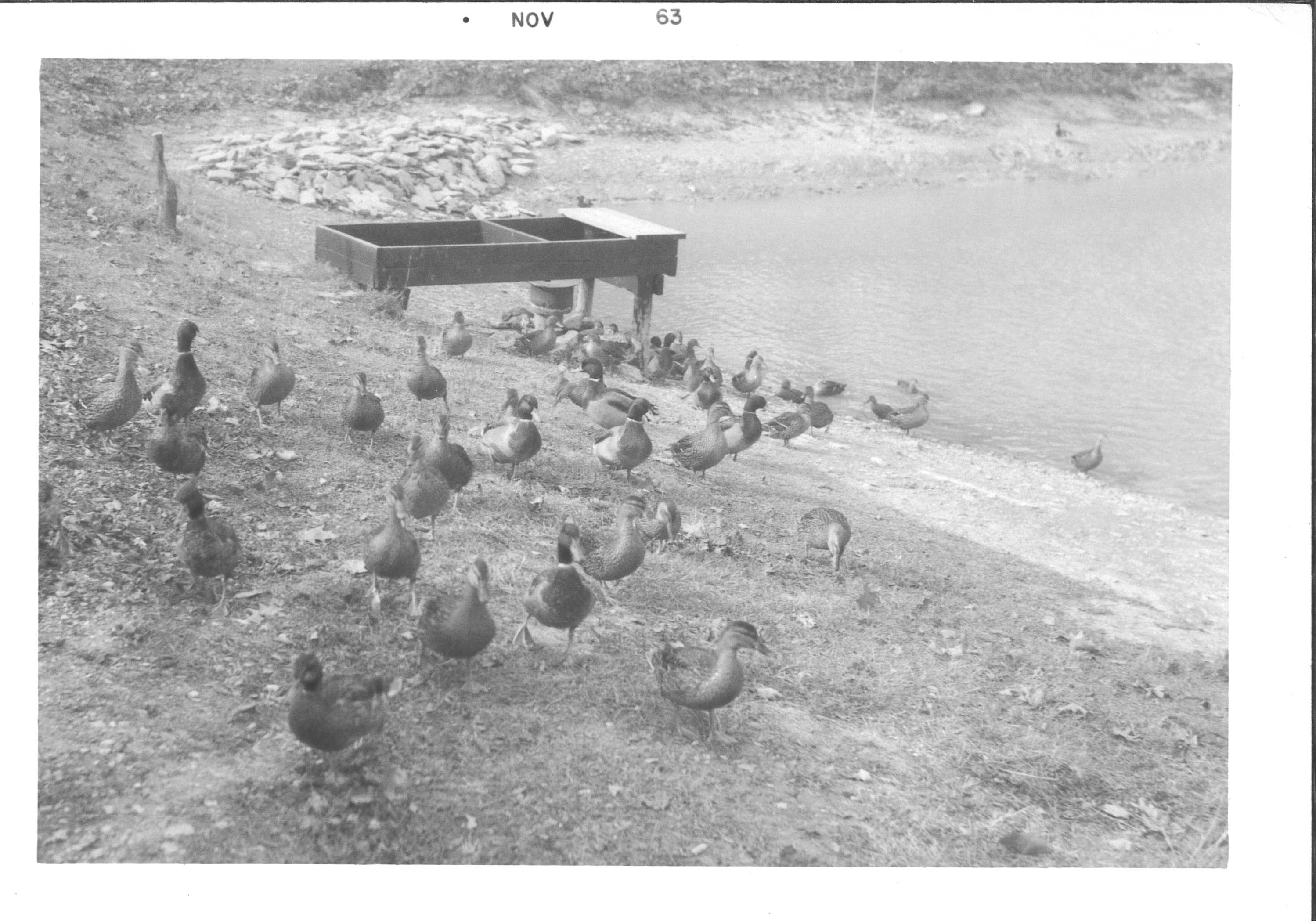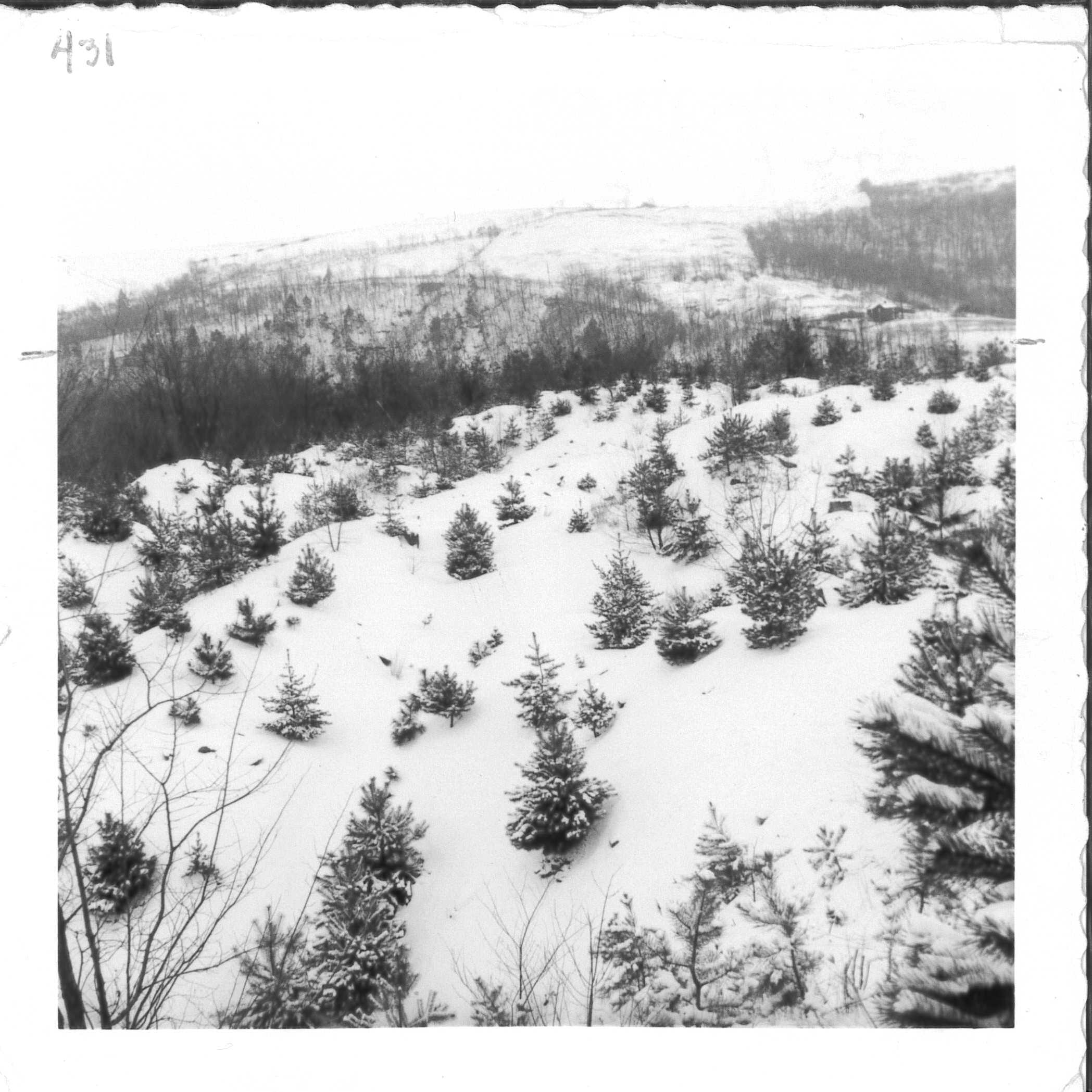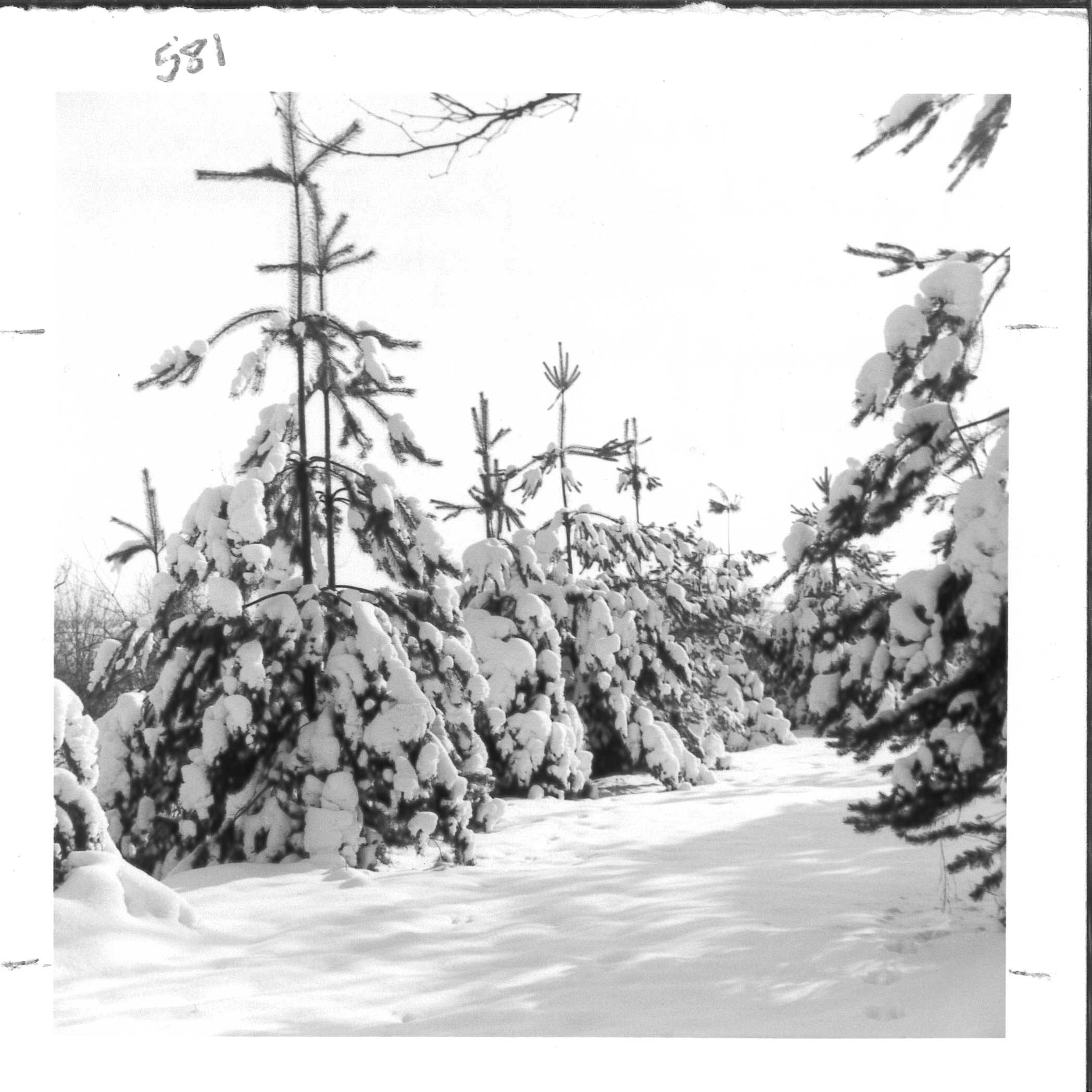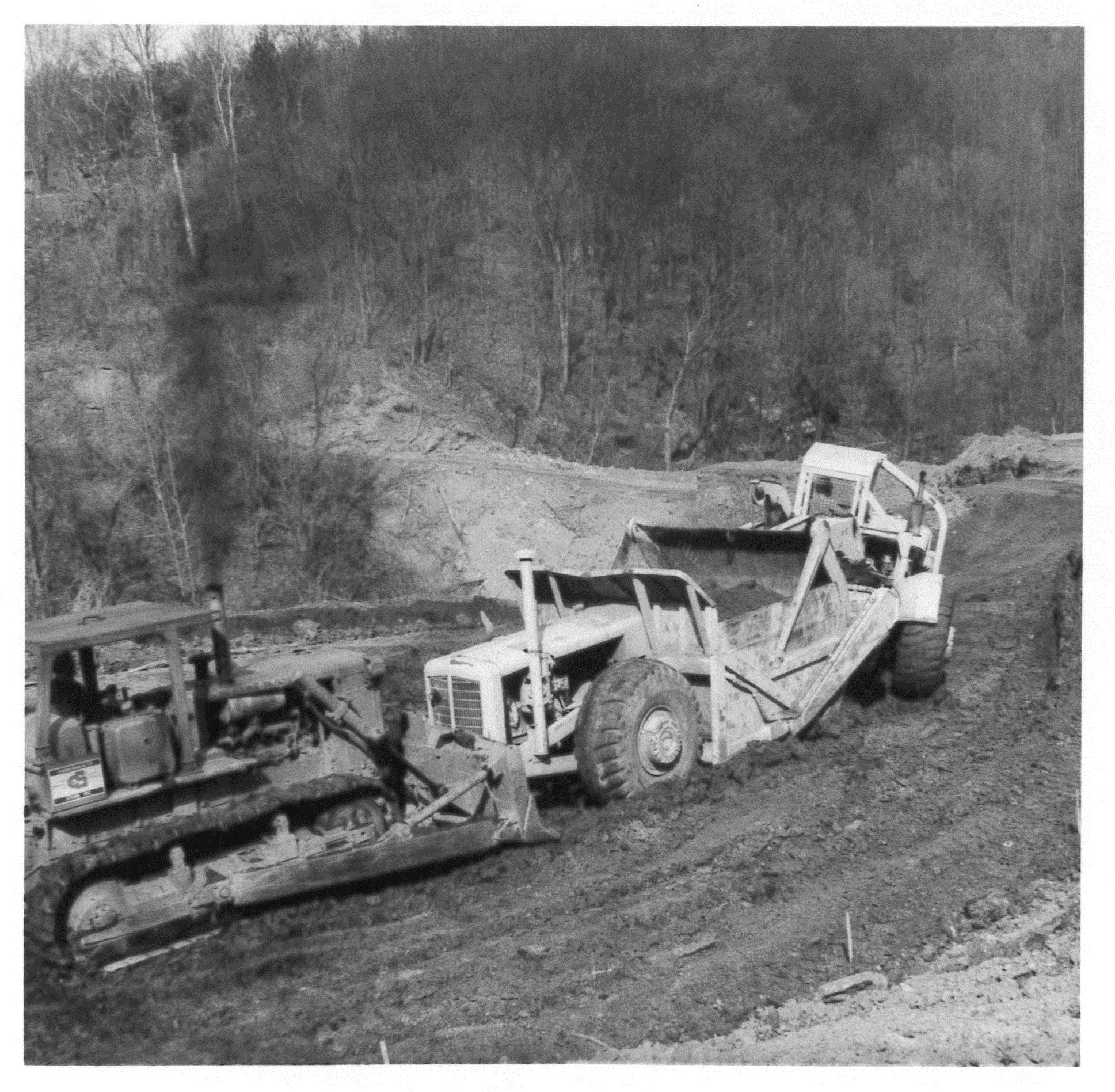This is part four in a series about the making of Meadowcroft. Read part one, part two, and part three.
“Looking back, it looks like an act of Divine Providence that things happened the way they did because now thousands of people are enjoying Meadowcroft and untold thousands of people in the future will enjoy what was done in the restoration of this land.”
– Albert Miller, July 25, 1976 (Miller, HSTMV, 6)
The land on which Camp Meadowcroft developed into Meadowcroft Rockshelter and Historic Village has its own fascinating history. Albert and Delvin’s grandfather T.A. Miller sold about 350 acres of the southeastern corner of the Bancroft farm and its mineral contents to the Jefferson Coal Company around 1920. The property then saw its landscape change as the coal was first deep mined and then stripped and abandoned by the close of World War II. Since the Meadowcroft strip-mining was completed before the Surface Mining Conservation and Reclamation Act of 1945, the property was left looking like a moonscape. Albert passed by this “strip and sit” parcel of land regularly. Reflecting on his restoration work in 1993 he wrote, “I wanted to cover the scars on any land I could see from any road to and from our home going to Avella and northeast going to Eldersville” (The Dream Before Meadowcroft, 3).
The reclamation work began before the Miller brothers re-purchased the Meadowcroft property. Delvin learned from Loren Brown, District Forester from Ligonier, that the commonwealth was planting large blocks of trees on coal-stripped lands and asked him to consider the Avella area the next time seedlings were available. As soon as the brothers learned from Mr. Brown that Bancroft had been chosen by the state, Albert mediated an agreement between the state forestry service, the Jefferson Coal Company, and other local landowners to plant 300,000 trees in the area over several years. Albert later reckoned that about 200,000 seedlings were planted by the state on his land holdings in 1953. (Albert and Delvin wouldn’t purchase the land from Jefferson Coal Co. until about 1956.) Albert lists the species planted that first year: white pine, red pine, Norway spruce, white spruce, bank pine, pitch pine, Virginia pine, Mugho pine, red oak, sugar maple, Chinese elm, Green ash, tulip poplar, red maple, sycamore, and basswood.
Albert continued to develop the land by planting various hardwoods and more conifers to determine which species could best handle life on the old mine. Albert noted that in some areas the topsoil had been turned 20 feet under, other areas were nothing but shale piles, and most places were very acidic with a pH of 3 or lower. Between 1959 and 1966, another 135,000 seedlings were planted by Albert and his farm crew. Because the Miller brothers were determined to promote suitable wildlife habitat, wild roses, honeysuckle, autumn olive, switch grass, and other species were planted for animal shelter and forage. Thousands of wildlife plants were procured from the Pennsylvania Game Commission, and the Soil Conservation Agency provided Albert with thousands of experimental cross-breeds and invasives to use the property as an experiment in re-establishing abandoned strip mines.
The work done on the farm and surrounding area resulted in Bancroft being named the second best conservation farm in Pennsylvania in 1953. In 1957, Albert was selected as Washington County’s “Outstanding Conservation Farmer,” and then in 1960 he received the Soil Conservation Service’s “Keystone Award” for his outstanding interest in conservation. The Bancroft farm became Washington County’s third registered tree farm in 1978. Over the next few decades Albert’s impact continued, and in 1992 he received the Good Steward Award from the National Arbor Day Foundation, a national award presented to an individual who has planted trees for future generations.
Meadowcroft still serves as a tree farm with periodic harvests to maintain the health and viability of our woods. The continuation of the Millers’ conservation efforts provides the resources for a thriving woodland habitat that we can still enjoy today. To see the results of the reclamation for yourself, join us on Sunday, Oct. 7 for staff-led hikes as part of our Walk in Penn’s Woods program.

Bibliography
Miller, Albert. (1980) The Bancroft as a Tree Farm. Unpublished manuscript.
Miller, Albert. (1993) The Dream Before Meadowcroft. Unpublished manuscript.
Miller, Albert. (1976) A History of Meadowcroft Village 1956-1969. Unpublished manuscript.
Andrew Donovan is the education and program manager at Meadowcroft Rockshelter and Historic Village.



